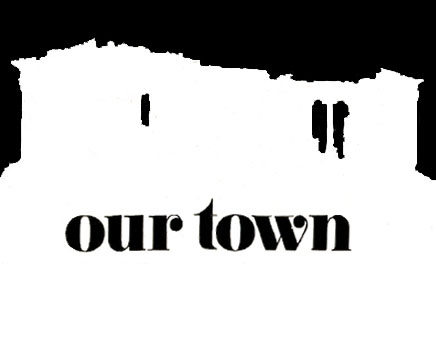
No doubt the major water shortage that Athens is facing for the first time in memory is due to some angry river and sky deities who have not received their share of homage, although the entire management of the Water Board has already been recommended for human sacrifice.
For lack of space, it is best to start more recently. Lately, droughts have afflicted many parts of the world, from sub-Saharan Africa and much of the western United States to the eastern Mediterranean. A record-breaking low rainfall from Venice to Cyprus is now in its third year and Athens is meteorologically in the centre of it. That a city the size of Athens, lying in a nearly semi-desert location, has never seriously suffered from a shortage of water has been partly due to frugal habits and good organization – traits of character not usually associated with Athenians. Among the heroes who have saved the city in its long and epic past, none are more revered than Messrs Ulen and Wilkinson of Saint Louis, Missouri, who reorganized the Athenian municipal hydraulic system in the 1920s, which until then was still operating much along the lines set down by the city’s first post-Mycenaean master-plumber, Emperor Hadrian. That benevolent autocrat knew that water, not bread and circuses, was the way to the heart of the masses. Mr Ulen took a page from the good emperor’s book and, by creating the Marathon Dam and the artificial lake behind it, won greater renown in Greek-US relations than President Truman and Telly Savalas together, and is still reverently called oulen for providing ordinary tap water to four million Athenians.
Ulen’s water system, however, has become almost as antiquated as Hadrian’s, whose last vestige of aqueduct is being swallowed up in the expanding and lush pleasure gardens of Filothei northwest.
No one gathers at the wellhead anymore, nor do Athenians come out of their houses with jugs when the bell of the water truck sounds. The weekly tub bath has been replaced by the twice-a-day Jacuzzi, and the geraniums in petrol-cans by banks of thirsty flowers designed by landscape architects. The lawn is the latest imported fashion and the greatest consumer of water. It was unheard of until the 1950s and the most elaborately-landscaped gardens of Kifissia, with their arbors, hedges, ornamental shrubberies, statuary, walks and shade trees, had no lawns. So, setting aside the vengeful acts of ravished river nymphs and disturbed ecological balances, changes in Athenians’ tastes have been part of their undoing. Besides growth in population, the average water consumption of city and suburban dwellers has risen 50 percent since 1983.
For those who prefer to find a villain with a more human face in times of misfortune, there is none better than the Metropolitan Water and Drainage Corporation (EYDAP). While it is rumored to consume its energies concocting schemes for raising utility fees, collecting money in unorthodox ways, manipulating metres and proposing. fiendish penalties for citizens who wash their cars in closed garages, hose down their street pavements at night and leave the tap water on while scrubbing their dentures, the Corporation is said to be wasting 300,000 cubic metres of water a day due to leaks in its deteriorated and ill-maintained municipal hydraulic network.
While it doles out plastic bags in order to reduce the volume in water closets, its system sprouts leaking like some giant underground sieve. If one believes the critics, one would imagine Athens to have turned into a kind of subtropical rain forest which is still far from the case.
Measurement of water passing through purification systems in the city’s reservoirs, when tallied against revenue based on the finding of metres (as if that might be the only ‘leak’ in this ingenious country) does give evidence of a 30 percent loss somewhere.
According to its data, EYDAP employs 500 to 800 people round the clock in each of its 3 municipal sectors, Athens, Piraeus and Neo Iraklion. They rush to the scene of a broken main with the esprit de corps of members of a football team. According to other data, it takes, on an average, an hour for EYDAP officials to reach the place of the break and another three for the repairing crew.
In a world where everyone casts the blame on everyone else and no one takes ultimate responsibility for anything, it is very hard to come to dependable conclusions. According to many, the problem began when the program for tapping, the Erinos River lying beyond Mornos, slated to start in 1980, was held up permanently. According to others, it was the casual abandonment as a back-up reservoir for the Mornos system of Lake Iliki, in which sheep now peaceably graze. Some say it is due to recent gross mismanagement (anti-PASOK people), to the present wimpy ‘save water’ campaign (anti-ND people), and the politically cynical maintain nothing will happen until the water pitcher sitting on the lecterns in Parliament is empty.
Meanwhile, we are urged to take showers rather than baths, use low washer programs, dig artesian wells, employ water diviners, encourage cloud-seeding projects, and join local folk-dancing groups invoking rain deities while the government’s sorcerer goes to Brussels in search of an appren-tice.
In all this talk of impending catastrophe (newspapers do countdowns on the hours left to the moment when the last drop drips from an Athenian faucet as if they were counting shopping days before Christmas), it is nice to hear the upbeat remarks of a government official whose optimism about the future is nicely balanced by a sense of the past. Agriculture Minister Mihalis Papakonstandinou says reservoirs of the Antonine period under Kolonaki and Rigillis are filled with water – both strongly conservative districts, by the way. 97 days left before switching over permanently to Cava Blanc de Blancs Riserva








